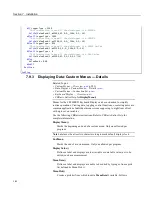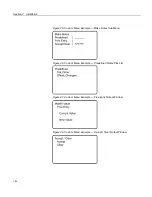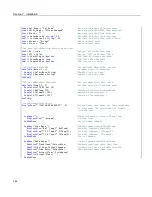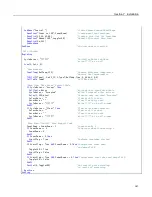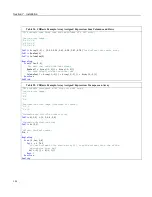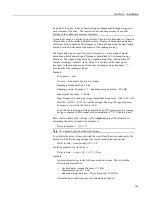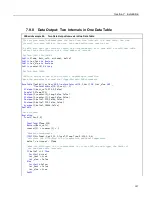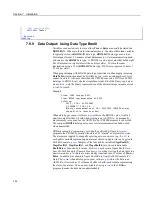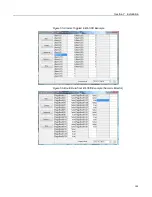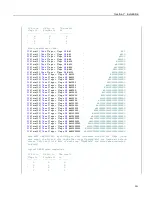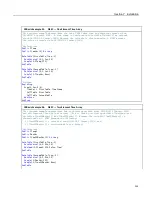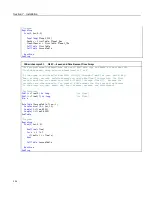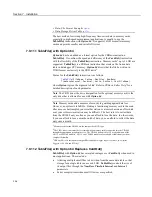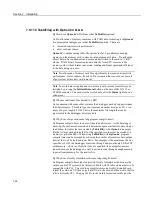
Section 7. Installation
elements of the array, instead of performing an independent running average on
each element of the array. The results will be a running average of a spatial
average of the various source array elements.
A running average is a digital low-pass filter; its output is attenuated as a function
of frequency, and its output is delayed in time. Degree of attenuation and phase
shift (time delay) depend on the frequency of the input signal and the time length
(which is related to the number of points) of the running average.
The figure
Running-Average Frequency Response
(p. 194)
is a graph of signal
attenuation plotted against signal frequency normalized to 1/(running average
duration). The signal is attenuated by a synchronizing filter with an order of 1
(simple avera
ging): Sin(πX) / (πX), where X is the ratio of the input signal
frequency to the running-average frequency (running-average frequency = 1 /
time length of the running average).
Example:
Scan period = 1 ms,
N value = 4 (number of points to average),
Running-average duration = 4 ms
Running-average frequency = 1 / (running-average duration = 250 Hz)
Input-signal frequency = 100 Hz
Input frequency to running average (normalized frequency) = 100 / 250 = 0.4
Sin(0.4π) / (0.4π) = 0.757 (or read from figure
Running-Average Frequency
Response
(p. 194),
where the X axis is 0.4)
For a 100 Hz input signal with an amplitude of 10 V peak-to-peak, a running
average outputs a 100 Hz signal with an amplitude of 7.57 V peak-to-peak.
There is also a phase shift, or delay, in the
AvgRun()
output. The formula for
calculating the delay, in number of samples, is:
Delay in samples = (N–1) / 2
Note
N = number of points in running average
To calculate the delay in time, multiply the result from the above equation by the
period at which the running average is executed (usually the scan period):
Delay in time = (scan period) • (N
–1) / 2
For the example above, the delay is:
Delay in time = (1 ms) • (4
– 1) / 2 = 1.5 ms
Example:
An accelerometer was tested while mounted on a beam. The test had the
following characteristics:
o
Accelerometer resonant frequency ≈ 36 Hz
o
Measurement period = 2 ms
o
Running average duration = 20 ms (frequency of 50 Hz)
Normalized resonant frequency was calculated as follows:
193
Summary of Contents for CR1000
Page 2: ......
Page 4: ......
Page 6: ......
Page 32: ......
Page 36: ......
Page 38: ......
Page 40: ......
Page 60: ...Section 4 System Quickstart Figure 16 PC200W View Line Graph 60 ...
Page 96: ......
Page 98: ...98 ...
Page 302: ......
Page 453: ...Section 8 Operation Figure 115 Using the Keyboard Display 453 ...
Page 456: ...Section 8 Operation Figure 118 Real Time Custom 456 ...
Page 457: ...Section 8 Operation 8 8 1 3 Final Memory Tables Figure 119 Final Memory Tables 457 ...
Page 458: ...Section 8 Operation 8 8 2 Run Stop Program Figure 120 Run Stop Program 458 ...
Page 460: ...Section 8 Operation Figure 122 File Edit 460 ...
Page 461: ...Section 8 Operation 8 8 4 PCCard Memory Card Display Figure 123 PCCard CF Card Display 461 ...
Page 478: ......
Page 506: ......
Page 536: ......
Page 636: ......
Page 642: ......
Page 644: ......
Page 676: ......
Page 677: ......




